It occurs to me that I haven't taken the time to talk about one of my favorite things in the world: airplanes! Or aeroplanes as I like to call them.
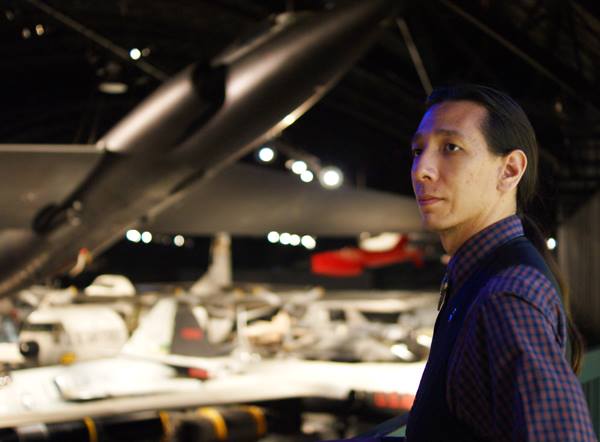
Some neurodivergent nerds like trains. They are really cool, my Dad sure liked them and I have inherited his modest collection of N-Scale trains that I'd like to do something with someday, but they never really managed to grip me. I like warships too, but that was mostly due to my interest in the Navy. My dear friend Anna works with gigantic sewage and water treatment systems and they are absolutely fascinating (and make great sounds that could easily supplement an industrial album). There's something about gigantic machines that creates an obsessive fascination in some folks, and mine happens to be aeroplanes.
I wasn't always into airplanes. Actually, for most of my life, I paid them no mind at all. Hell, I didn't fly on an airplane for the first time until 2010. I really would not have been able to tell you the difference between any given airplane, even when they might be striking. That all changed in 2012, though.
In my quest to become a Navy officer, I found myself seeking out as many extracurricular activities as I could that might demonstrate my usefulness to the imperial machine. I started a weekly model UN crisis committee game club at my community college, which hosted a variety of speakers from retired state dept guys, and even the former head of the history department from the university of Libya right around when Gaddafi got what was coming to him (she was in good spirits you might guess). This was in addition to all the student life diversity stuff I was involved with both at the college and the UofA: leadership camps, cleanups, etc. I was pretty ubiquitous around the academic circles of Tucson.
But I wanted more to set me apart. So I looked around for some volunteer opportunities that might get me some connections in the military, and I found one: the Pima Air and Space Museum.
The volunteer staff was almost entirely retired military guys, from grunt mechanics who did a tour in the Gulf War to a couple generals who'd flown in Vietnam and just about everything in between, even had the opportunity to listen to some stories from some truly ancient World War 2 vets. Being the youngest volunteer at the museum by a few decades, I turned a lot of heads. Most of the youngun's who passed through barely lasted more than a weekend, so most of the older guys didn't expect much from me. I didn't blame them, after all, what's so special about airplanes?
The first time I entered the museum, I was overwhelmed with how different all the planes could be. Near the entrance was the world's smallest plane (by wingspan, apparently there are a couple with smaller volumes) the Starr Bumble Bee, right beside some 1930's biplanes right beside the technological terrors of the Cold War. Each of these planes has a story attached to them, about their manufacture, about the individual model, about who flew it or owned it. I think the learjet in the museum belonged to Elizabeth Taylor at some point.
That's what initially hooked me. As a museum docent, everything was about stories. Most of the old men there loved telling stories and I loved listening. As I learned more about how they worked, both through the museum's educational materials and going through the nearly non-existent aerospace engineering program at the community college (it was the shortest AofE program that interested me), I became more and more obsessed with them. Combined with my constant study of the military, I found myself learning everything I could about all of them.
Because it was a museum, most of my study was dedicated to machines that had not been in service for a fairly long time. I found myself loving talking about them and educating the public on how they worked and where they came from and why they existed, and eventually started teaching some basic physics and fluid dynamics to kids (and interested parents) at the open house nights that would be held over the summer.
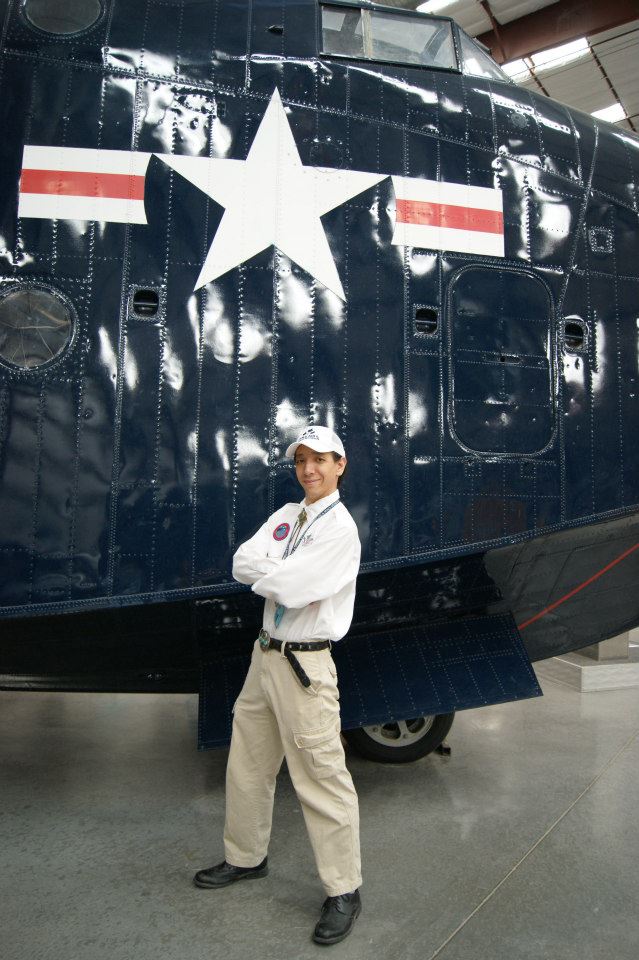
I was voted as volunteer of the month for September of 2012 after I'd been there for six months. It was one of my proudest achievements.
Soon after, due to some complicated circumstances, my family and I had to leave Arizona for Ohio. I was heartbroken to leave the museum, and I got a grand sendoff from all the old men, with a couple colonels writing me some letters of rec for my future application to OCS.
I may have had to say goodbye to my beloved museum that had become one of my great loves, but I always kept that time close to my heart, and I still always find myself looking up at every plane I hear in the sky.
So obviously I have a few favorite planes. My focus is mostly on military aircraft, which I thought were the coolest, but as someone who studied a bit of the engineering aspect behind it, civilian aircraft are nothing to dismiss. Someday I'd like to try my hand at building my own ultralight. I'll have to have a separate post about my favorite civilian aircraft, as there's quite a bit to talk about there even if it isn't my main interest.
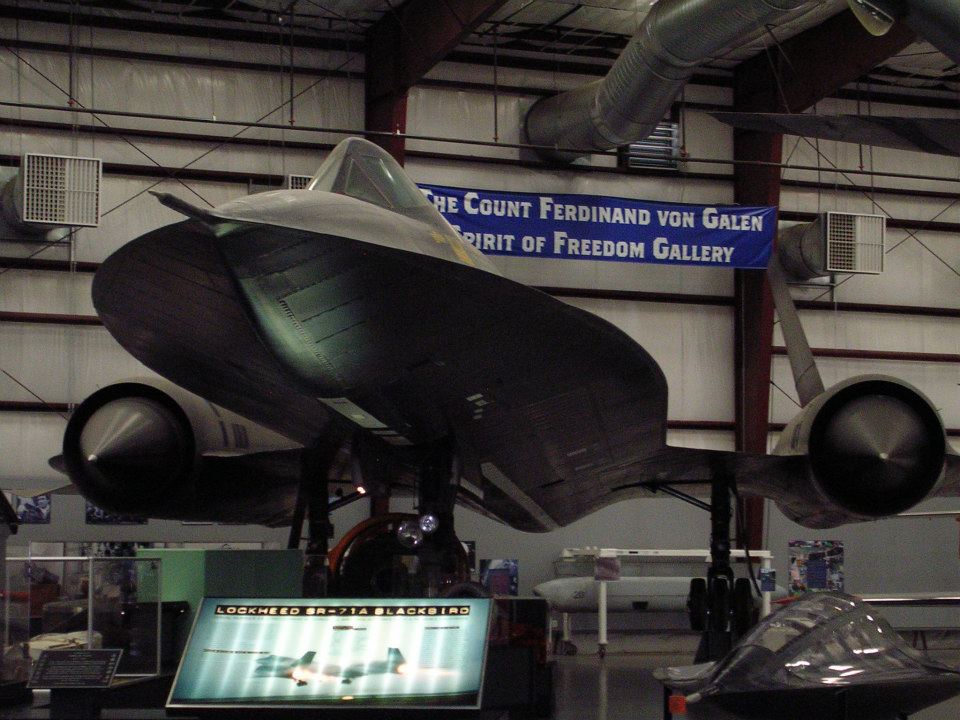
This one should be no stranger if you've ever watched X-Men. The SR-71 Blackbird is the fastest piloted atmospheric aircraft in the world, and was developed by Lockheed (and the CIA) in the 60s and 70s after their U-2 Dragon Lady got downed by some Russian artillery in the cold war (there are arguments out there that it was a lucky shot). It was meant to be a spy-plane, being able to fly up to 80,000 ft and at speeds of at least mach 3.2. It did not carry any weapons.
One of the former pilots of it came in once and claimed that he'd been fired for taking it to 90,000 ft against orders, but who knows if that's even true.
During in-flight operations, the various temperatures around it can reach heights of more than 2,000 degrees fahrenheit, which would melt most aluminum planes, so it had to be made with titanium, which the US doesn't have a lot of, but Russia does. The CIA ended up making a shell corporation in Germany I think in order to get the Russians to sell it to them.
One story holds that a pilot had an 8 hour mission in it once, with temperatures in the cockpit reaching nearly 200 degrees F. The pilots were equipped with what I can only describe as a space suit, but the amount of sweat on that mission caused him to lose 8 pounds.
I would say that this is one of the great technological marvels of the 20th century, though it doesn't have much of a place in the capitalist order anymore since satellites work better for its mission in every practical way. I felt very lucky to spend so much time around one.
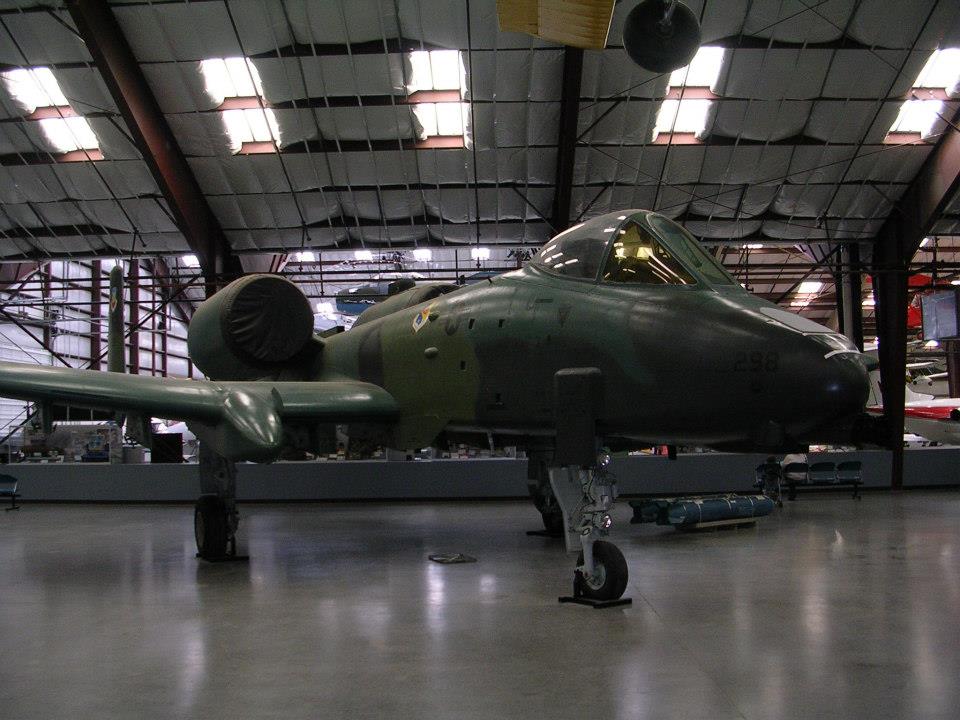
Tanks are a thing I think are cool. But I just haven't really ever had the kind of exposure to them I had to planes, but this one is close. It's the A-10 Thunderbolt II, more commonly known as the Warthog. It was developed by Fairchild Republic during the Vietnam war in order to fulfill a close air support role for infantry on the ground.
It's called the Warthog 'cause it's an ugly sumnabich, with an armament to match. It features around a dozen hardpoints to mount weaponry (or additional fuel) but its main armanent would be the GAU-8/A Avenger Autocannon. It's exactly what it sounds like, it's a seven barrel rotary cannon that fires 30mm shells. It can fire so many so quickly that a short trigger squeeze burst will have an 80% kill rate for around a 40ft diameter (I might be wrong on some of these numbers, it's been a long time). If one were to hold down the trigger and empty the ammo storage, the force of the cannon would stall the engines.
The cockpit is titanium reinforced, and nothing less than an 8-inch shell is guaranteed to breach it. The engines are also reinforced, and the plane is able to make it back if one of them goes down. Its top speed isn't even 400 mph, it is definitely not a fighter jet or a spy plane. It is for all intents and purposes a tank with wings.
It is indisputably a weapon of direct warfare.
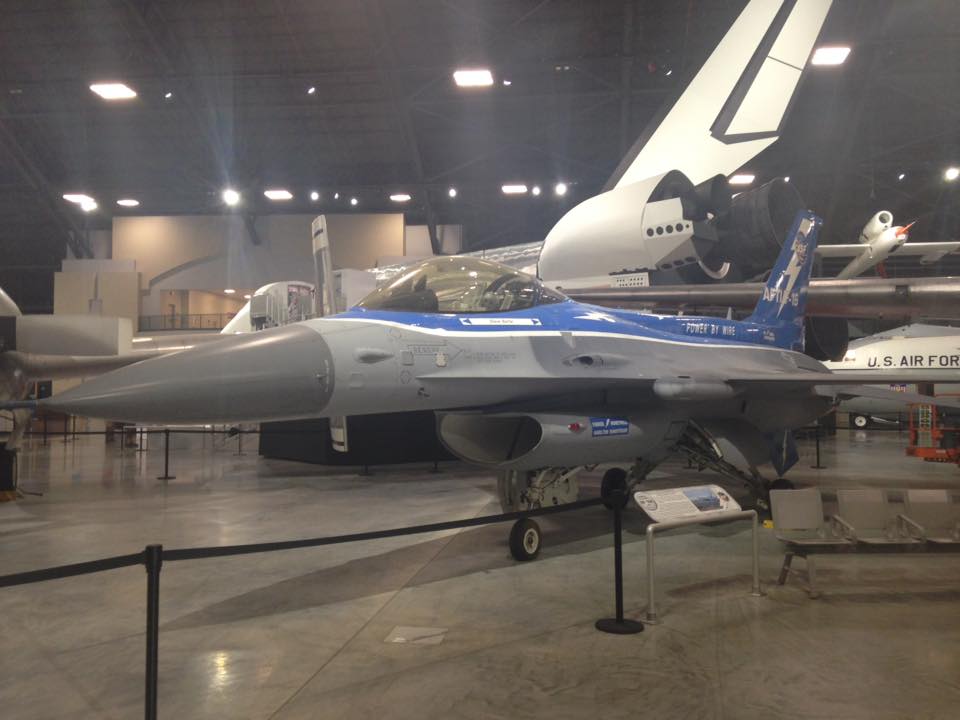
My first time ever seeing an F-16 was walking home one day from the bus not too long after starting at the museum. We didn't have one there since they were still very heavily in service, but I saw one flying over Davis-Monthan Air Force Base, the entrance of which was only a couple hundred feet from my house. It flew through the air like a penguin gliding through water, and I marveled at how manueverable it was. It was a thing of elegance and grace that transfixed me. I think it was that moment I really started to fall in love with aeroplanes.
The F-16 Fighting Falcon was made by General Dynamics in the 70's though came to prominence in worldwide militaries in the 80s and 90s, primarily as a strike craft.
I've heard tell of the pilots being subjected to up to 9Gs on hard turns. It's a single engine, but a big one going right through the center. The sweeping wing design with a single rear fin gives it a great deal of instability that allows for extreme manueverability.
I have a couple models of this one, including a pin of it I put on sometimes if I don't think I'm going to be accused of being a warmonger (I can't call myself a pacifist easily because I think several forms of peace are just warfare in a different form, but who has time for nuance). I also have one for my GI Joe collection, and is probably the coolest vehicle I have for them (until I can someday get my hands on the Defiant Shuttle Complex).
I've also had the privilege of sitting in the (detached) cockpit of one of these at the National Air Force Museum in Dayton (Ohio's not all bad).
Admittedly I don't know as much about this one as I'd like to, since the museum didn't have one and technical descriptions are so droll. A lot of things I love I learn about through stories, and unfortunately I've never had a chance to hear one about these bad boys.
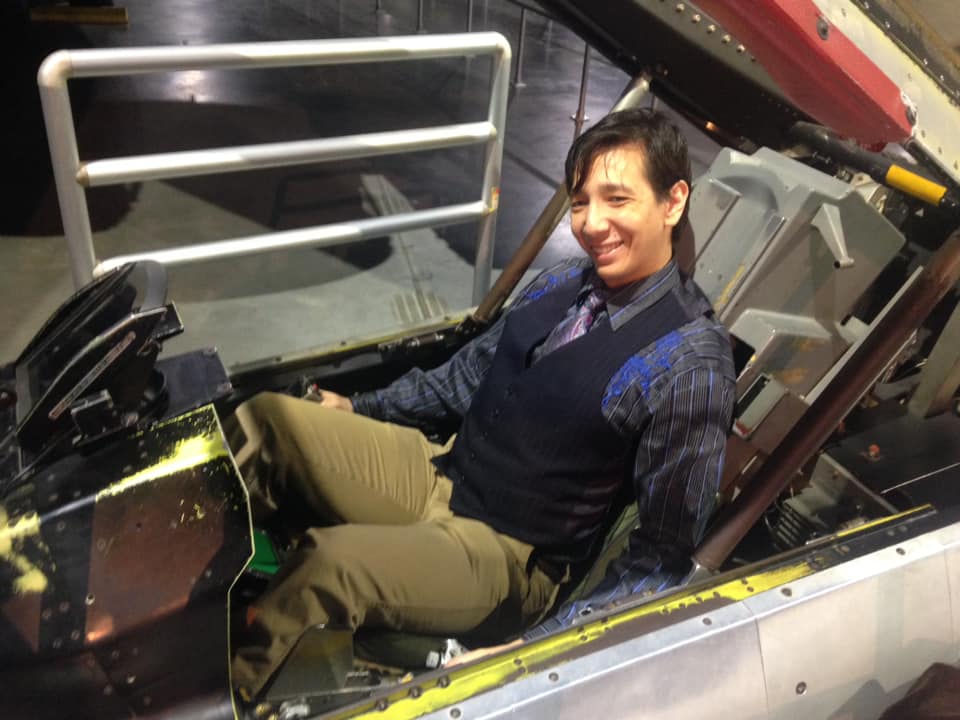
I could probably ramble about my favorite planes all day. The F-14 Tomcat and its variable wing design is one of the coolest engineering feats ever, and then there's the AV-8 Harrier, the first (working) V/STOL design, as well as the ol' Dragon Lady herself. I didn't have a chance to lick the F-22 they have over in Dayton out of the assumption I would probably be arrested immediately, though I have managed to put my tongue on both of Kennedy's Air Force Ones. You're not going to get any more context on that so don't bother asking.
I have a lot of mixed feelings on military aircraft now, seeing as how I no longer believe in American hegemony, and each of these are indisputably war machines. As a student of history and engineering, I can find myself fascinated by them, but most places you go in the world will hold these elegant weapon systems as no more than symbols of terror and rightfully so.
I hope for the day when all these machines are lovely little bits of history featured only in videogames and historical dramas, but I do feel so fortunate that I lived a life where I could see and analyze them up close as much as I have. I think it's important to acknowledge the negative aspects of the things you love, and to admire them as the marvels of human brilliance they represent while still keeping in mind the human suffering they have been used to inflict.
Oh, and just for the record, no I don't really like Top Gun.